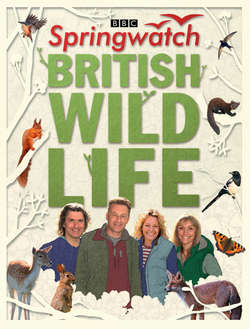Читать книгу Springwatch British Wildlife: Accompanies the BBC 2 TV series - Stephen Moss - Страница 26
ОглавлениеCuckoo & Nightjar
©Harry Fiolet/FN/Minden/FLPA
The nightjar’s plumage is an extraordinary mixture of greys, browns and buffs, designed to camouflage the bird.
The cuckoo and the nightjar have a lot in common. Both are summer visitors here from Africa, and both are long-winged, slender birds, easily mistaken for a hawk or falcon, especially if you get only a fleeting view. They are also birds that are heard far more often than they are seen.
The call of the cuckoo is, of course, one of the best known of all Britain’s birds, though the species’ decline in recent years does mean that fewer and fewer people now hear them each spring. The days when observers vied with each other to report the first cuckoo in the letters pages of The Times are long gone. Nowadays, to hear a cuckoo call at all is something of an event.
The reasons behind the cuckoo’s rapid decline are complex, but it does appear that factors at home and abroad are involved. Here, the decline of large moths means the caterpillars on which cuckoo chicks are fed by their foster parents are far less readily available. And on the cuckoo’s wintering grounds in Africa, drought and habitat loss are adding to the bird’s problems.
Cuckoos still arrive in Britain from mid-April onwards; the date was once commemorated around the country by ‘Cuckoo Fairs’ held around this time of year to welcome back the bird.
In some ways, it is rather odd that our ancestors celebrated its arrival because, as well as its distinctive call, the cuckoo is best known for a less appealing habit. Uniquely among British birds, female cuckoos lay their eggs in other birds’ nests, a strategy known as ‘brood parasitism’. Although this may seem rather bizarre, it clearly works: because she is free from the burden of having to raise a brood of chicks, which takes up a huge amount of time and energy, the female cuckoo is able to lay up to 20 eggs.
British cuckoos have three main host species: the reed warbler, meadow pipit and dunnock. A female cuckoo will lay her eggs in the nest of the species that raised her, but perhaps the most fascinating aspect of the cuckoo’s breeding behaviour is what happens after the chick hatches. Almost as soon as it is born, the baby cuckoo uses its amazing strength to throw out the other eggs in the nest. This means that the unfortunate host parents have only one chick to feed – but what a chick! Cuckoos grow larger than the parents themselves, whose work is cut out feeding this monster in their nest.
Whereas the cuckoo is undergoing a sharp decline, its fellow migrant, the nightjar, is currently doing rather well. As a species on the northern edge of its breeding range in Britain, it may even be benefiting from climate change, which has enabled it to shift its breeding range farther north. Better management of its heathland and forest habitat has also contributed to its success.
Nevertheless, the nightjar remains a tricky bird to see because of its nocturnal habits. Fine, warm evenings are best: just before dusk you may hear that characteristic mechanical noise known as ‘churring’, which, if you are lucky, will signal the appearance of a displaying bird against the darkening sky. Before the light begins to fade, look out for the prominent white patches towards the end of the nightjar’s wings, which the male uses to signal to the female. One way of getting better views of this elusive bird is to wave two white hankies around in the air, though of course you will risk being mistaken for a morris dancer!
Like owls, the nightjar has given rise to a large body of folklore: the name ‘goatsucker’ relates to the mistaken belief that these strange birds suckled goats. Another folk-name, ‘fern owl’, refers to the bird’s habitat of nesting among bracken.
Nightjars are almost impossible to see on the ground, as their plumage is camouflaged to blend in with their heathland habitat. But we are now learning a little more about both these species, thanks to our new-found ability to place tiny tracking devices on them before they undertake their journeys south.
©Dickie Duckett/FLPA
The cuckoo is far more often heard than seen, its celebrated call being linked with the coming of spring.
